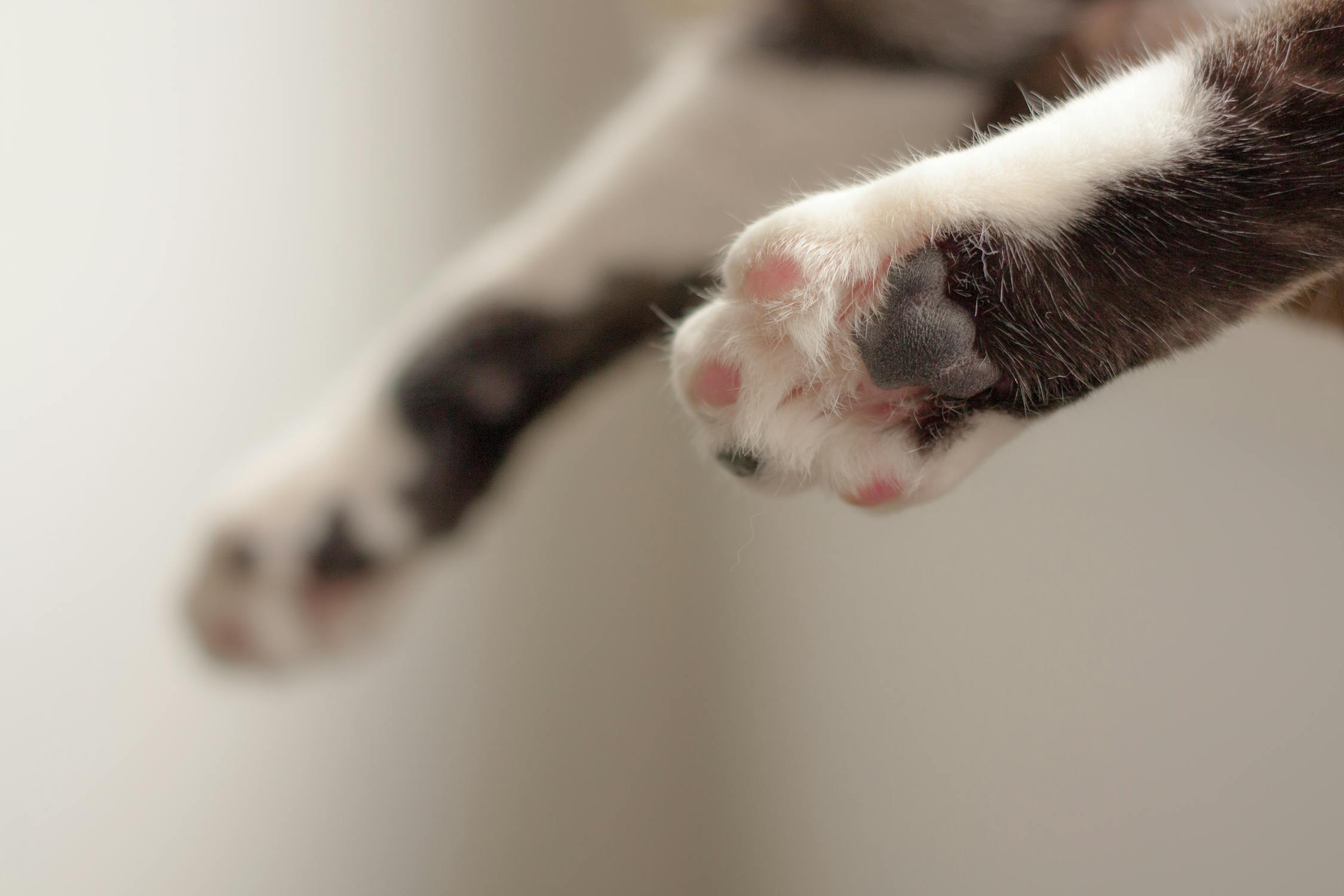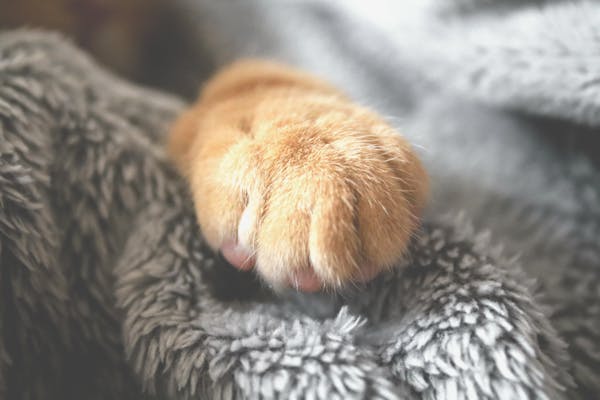Cat need their paw to be in good shape so they can scratch, climb, and perform their incredible acrobatic landings. On a regular basis, you should examine the paws of your cat for any injuries and ensure that they have been well-cleaned.
When it comes to grooming, giving your cat’s feet the attention they need should be your top priority. It is essential that her paws do not come into contact with litter, dirt, or cleaning agents of any kind. Aside from the discomfort, she might also be unwittingly putting potentially hazardous things in her mouth when she grooms herself if they stick to her feet. Once a day, you need to clean your cat’s paws by wiping them with a damp cloth.

Examine the region next to her paw pads as well as the space in between her toes. If you maintain the floor and any other surfaces clean and clear of debris and cleaning chemicals, your cat’s paws and your furniture will appreciate you.
1. Close Lookout
Because of their natural inquisitiveness, it is reasonable to assume that cats, regardless of whether they dwell indoors or outdoors, may on occasion explore environments that are foreign to them. If your little explorer has a habit of wandering off on his or her own, it is essential that you keep a close lookout for any injuries to your cat paw, such as cuts, sores, splinters, or swellings.
2. Provide Scratching Post
Only after a vigorous session of scratching is it possible to view the sharp, silky claws that lie hidden under the outer nail sheaths. It is a good idea to provide a variety of scratching posts for your cat so that she does not become bored and start damaging your furniture. This will prevent your cat from scratching up your furniture. If you sprinkle some catnip on the post, it will make her more interested in investigating it.
3. Do Regular Wipe
Regularly cleaning your cat’s paws is the most effective way to maintain healthy feet for your pet, so make it a habit to do so. When your cat comes back inside from being outside, and on other days of the week as well, wipe her paws carefully with a soft towel to remove any dirt or debris that may have accumulated. This will remove any debris, chemicals, or other foreign substances, as well as prevent dirt from collecting into your carpeting and furnishings. You have to put your attention on the area in between your toes if you want to be successful.
4. Nail-Trimming

Before you trim your cat’s nails, massage her paws to make her more accustomed to having her paws stroked. This will make the process go more smoothly. You only need one or two claws per session to get started with this activity. When she is at ease and not making any noise, proceed as follows:
- It is possible to coax her into using her claws by tapping lightly on the soft pad that sits on top of her foot.
- Remove the white tips from the cat’s nails just before the nail curves by cutting them with high-quality scissors that were designed exclusively for trimming cat nails.
- You need to use extreme caution in order to avoid nicking or puncturing the quick, which is a vein that runs through the nail. This rosy splotch can be seen rather plainly beneath the nail.
- If you cut into the pink area by accident, you can stop the bleeding by using styptic powder or cornstarch to apply pressure to the wound.
- When you trim your cat’s nails or handle her paws, make sure to offer her lots of praise and give her a treat that she really likes as a reward.
5. Cat Paw Pad Safety
It is easy for the paw pads to become inflamed when exposed to temperatures that are too high or too low; thus, you should keep your cat away from asphalt in the summer and concrete or metal in the winter. If the pads of your cat’s paws appear to be especially dry and cracked, you may want to think about applying a moisturizing ointment to them. If you contact a local veterinarian, you will be able to obtain further information.
6. Keeping Her Hairy Feet in Good Shape
There are some long-haired cat breeds that have fur between their toes. You can determine if your cat is bothered by this by how much she licks at her fur; if she does this a lot, you should talk to a groomer or your veterinarian about how to cut her hair.
Checking the feet of your cat on a regular basis will allow you to identify any problems with their health, such as injuries or infections. Utilizing tweezers, carefully remove any splinters or foreign items that may be present, and clean any incisions that may have been made. If you notice any signs of infection in your cats, such as blood, pus, or an unusual odor, you should bring him in for an examination as soon as possible.
7. Take Care of the Pads

Always make sure the sensitive paw pads of your cat are well protected. By keeping your cat indoors and applying a lotion that your doctor has suggested, you can prevent the paws of your cat from becoming dry and cracked from exposure to severe temperatures.
8. Treat Cat Paw With Moisturizers
Moisturizing cat paws keeps them healthy, velvety, and supple. These products are meant to prevent dry cat paws. Veterinarians recommend applying Vaseline to paw pads every two or three days. Petroleum jelly is popular. Some cat owners may be uneasy with petroleum-based products for cats. Pets should never be given petroleum-based jelly.
Olive or coconut oil is safer for paw pads. The paws won’t touch the floor. This product seals in moisture to prevent dry cat paws. Avoid pet paw moisturizers containing irritating ingredients. They can irritate or poison cats. For safe and effective pet products, see a vet.
9. Pay Attention on Body Language of Your Cat
If you see any of the following signs in your cat, including extensive paw washing, favoring one limb, or limping, it is possible that your cat needs to see a veterinarian.
10. Do Not Declaw
When the toes of a cat are cut off during the excruciatingly painful technique known as “declawing,” the animal goes through a tremendous deal of agony as a result of the procedure. Please respect your cat’s natural drive to scratch by providing suitable scratching spots, cutting your cat’s nails regularly, and researching the different ways available for keeping your cat from scratching furniture or other valuables.










